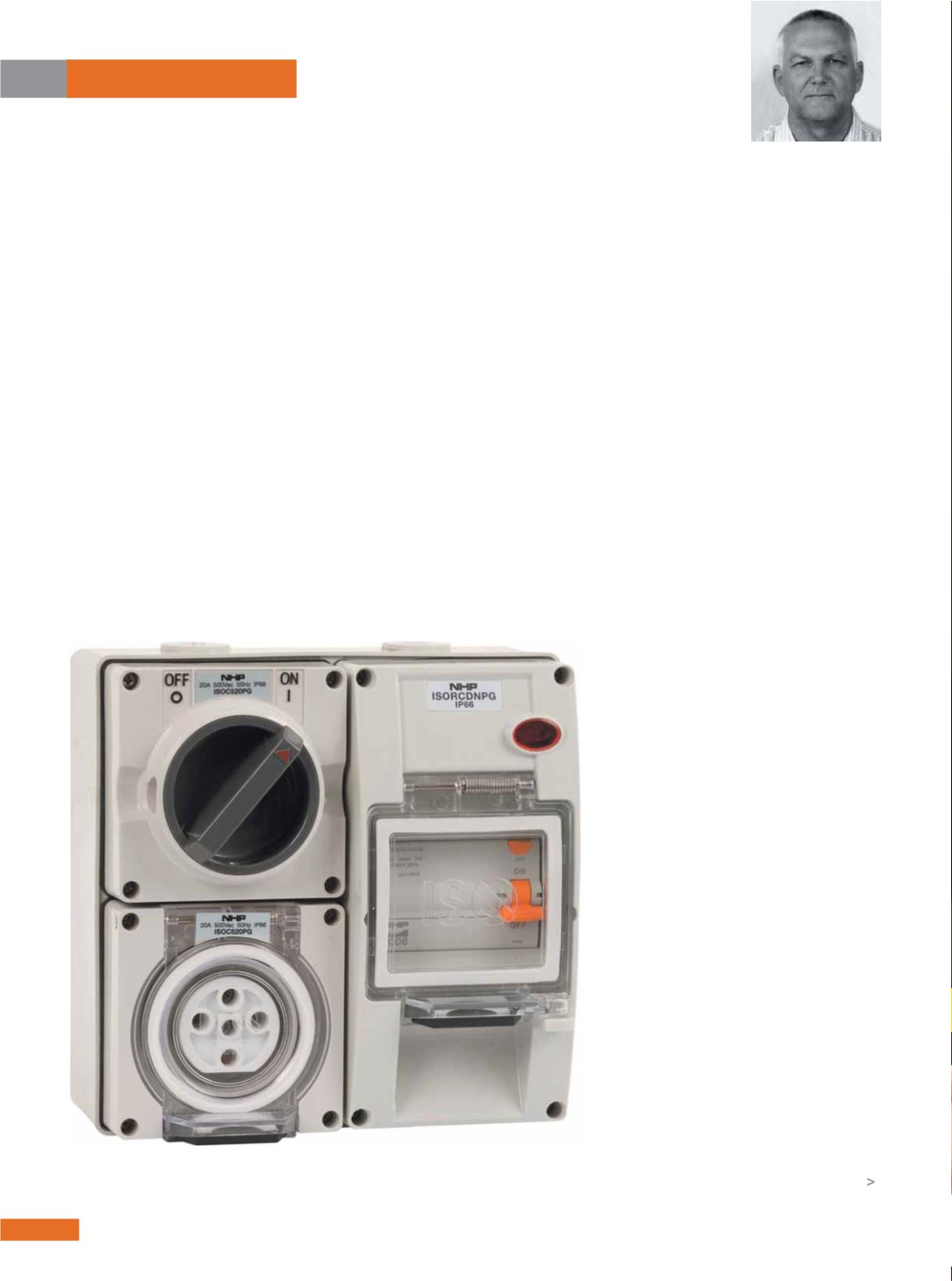

3 6
E L E CT R I C AL CONNE CT I ON
AUTUMN 2 01 5
with
Chris Halliday
SAFETY SWITCHES
A life-saving trip
E
lectricians, as the experts in their
trade, have an obligation to clients
to provide safe outcomes, now and
into the future.
The installation of safety switches is one very
easy and important way of achieving this.
RESIDENTIAL INSTALLATIONS
Residual current devices (RCDs) have not
always been installed on fixed equipment
such as stoves, hot water systems or
air conditioning circuits. However, they
should be fitted to all circuits in residential
installations to ensure safer outcomes.
Further, Clause 3.9.4 and Figure 3.4 of the
Wiring Rules looks at clearances fromwall
linings. Where cables are fixed and concealed
within 50mm of the surface of a wall, floor,
ceiling or roof (neglecting the area within
150mm of internal wall-to-wall and wall-to-
ceiling corners – see Figure 3.3), there are four
ways of achieving compliance.
You could drill bigger holes to allow the
cable to move freely, provide adequate
mechanical protection, use earthed metallic
armouring, etc, and/or protect the circuit
with an RCD (refer Clause 3.9.4.4).
Bigger holes would allow mice to enter
wall cavities. These creatures often chew the
insulation off cables to get a little extra room
to fit through – which is not a good result.
Unless you use one of the options it
would be difficult to achieve compliance
with 75mm wall studs, or with larger cables
such as stove cables and 90mm wall studs.
In the Wiring Rules (Clause 2.6.2.3), RCDs
are recommended for main switches in
residential premises, with a trip current of
100mA to 300mA and a selective delay to
ensure grading (to prevent fires).
If it’s good enough for the Wiring Rules,
then it’s good enough for your clients.
(A protected neutral link will be needed
as an extra).
OTHER INSTALLATIONS
For non-residential applications, Clause
2.6.3.2.1 of the Wiring Rules specifies where
RCDs should be fitted.
The clause states: Additional protection by
RCDs with a maximum rated residual current
of 30mA shall be provided for (a) final sub-
circuits supplying socket-outlets where the
rated current of any individual socket-outlet
does not exceed 20A.
This generally means that circuits
supplying socket outlets above 20A in other
installations do not get RCDs. However, at
the end of the aforementioned clause, the
Wiring Rules refers you to workplace health
and safety (WH&S) legislation, and does the
lack of an RCD ensure safety? No!
More on this in the next section.
HARMONISED LEGISLATION
The harmonised WH&S legislation
discusses “hostile environments” and
stipulates RCD protection above and
beyond Wiring Rules requirements.
If you are just following the Wiring Rules
to where RCDs in “other electrical
Do we need RCDs on all
circuits, including stoves
and hot water units, above
and beyond the rules?
Chris Halliday
examines an
important safety matter.
RCD protection at three-phase socket outlets may negate the need to replace a
switchboard that may not have space for an RCD.
















